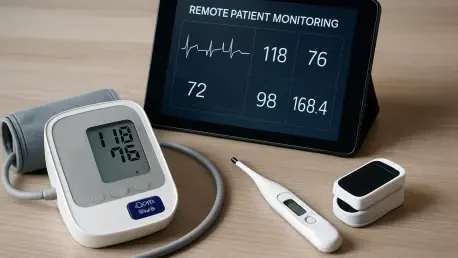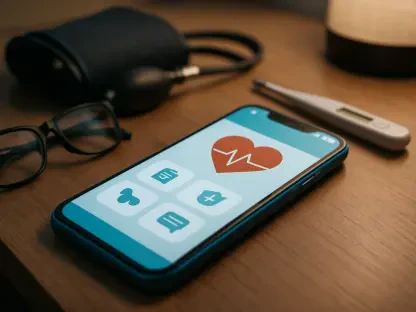Listen to the Article
The promise of remote patient monitoring isn’t in glossy pilots or splashy press; it lives in the daily grind of fewer avoidable admissions, tighter care coordination, and happier clinicians. Yet many health systems remain stuck in proof-of-concept purgatory.
This editorial offers a practical blueprint for B2B health tech teams and enterprise providers that need remote patient monitoring to move from slide decks to a line item that improves both margin and quality.
Why Remote Patient Monitoring Stalls at the Pilot Stage
Pilots are great at proving technology can work; they’re terrible at proving an operating model will hold under real volume, real staffing, and real contracting constraints. Most remote patient monitoring initiatives fail not on accuracy but on accountability, logistics, and economics.
Across integrated delivery networks and large medical groups, remote patient monitoring often launches with philanthropic energy and then stalls within a year. Device logistics overwhelm staff. Enrollment sputters. Signal noise buries nurses. Finance can’t reconcile promised benefits with booked dollars. The technology works; the business case doesn’t.
The fix is not more features, but a tighter contract between outcomes, operations, and reimbursement.
Write the Business Case Like a Contract
Strategy becomes execution when it’s written down, signed, and reviewable. Treat your remote patient monitoring plan like a service agreement between clinical ops and finance – with no fuzzy edges.
A remote patient monitoring business case should read like a service agreement between clinical operations and finance. It should clearly define the cohort, staffing ratios, intervention playbooks, technology costs, reimbursement path, and success criteria, including off-ramps. When leaders sign this “internal contract,” they agree on what will be measured and who is accountable.
A contract without disciplined metrics is just a manifesto – so narrow your dashboard to what moves the profit and loss.
Measure What Matters, Not What’s Convenient
Data abundance is not the same as decision quality. The more numbers you show, the harder it is for leaders to find the ones that pay the bills and protect quality.
Remote patient monitoring generates torrents of data. Most of it is noise to finance and stress to nurses. Strip the dashboard to five metrics that map cleanly to the profit and loss and quality goals:
Enrollment adherence: percent of eligible patients enrolled and connected within seven days.
Signal quality: valid readings per device per day.
Clinical action rate: share of readings that triggered outreach or titration.
Outcome delta: change in acute utilization versus matched baseline or control.
Cost per engaged patient per month: all-in program cost divided by adherent patients.
Those five reveal whether you’re creating value or just activity. Metrics don’t save time; workflows do. Here’s how to take care of them.
Design for Human Workflows First
If a plan adds clicks and queues, it adds cost. Sustainability comes from designing around the people who enroll, monitor, escalate, and document, then letting tech fade into the background.
The fastest way to kill return on investment is to give nurses another screen and another queue. Map the end-to-end workflow: who orders remote patient monitoring, who enrolls, who teaches, who monitors, who escalates, and who documents. Integrate enrollment with discharge planning and chronic care management. Automate low-value steps: eligibility checks, shipping notifications, device pairing, and time capture. Use protocol-based outreach with clinician-in-the-loop controls. Give physicians clear standing orders for titrations, so nurses can act without waiting for callbacks. Make documentation native to the Electronic Health Record; if a nurse has to write the same note twice, your cost curve is already bending the wrong way.
With workflows clear, choose tools that fit the flow: reliability, integration, and privacy over shiny features.
Reimbursement and Contracting Realities
Remote patient monitoring economics are pathway-dependent. Whether you lean on Current Procedural Terminology codes, downside risk, or shared savings, the rules of adjudication must be explicit and agreed upon up front.
You have three macro paths to dollars. First, fee-for-service Current Procedural Terminology codes for device supply, setup, and monitoring can fund a nurse-led service if adherence is high and documentation is consistent.
Second, value-based contracts reward avoided utilization and improved outcomes; here, attribution and risk adjustment are critical, and the counterfactual must be agreed in advance.
Third, shared-savings agreements among payer, provider, and vendor can align incentives but require transparent baselines and independent analytics to keep everyone honest. In all cases, define the adjudication calendar, the data sources, and the tie-breaker rules before the first device ships.
Common Pitfalls (and How to Avoid Them)
Most remote patient monitoring programs don’t fail in the clinic; they fail in the seams between people, process, and proof. Name the traps early and give owners a way to neutralize them. Some of the pitfalls include:
Fuzzy cohorts: when “eligible” means everyone, no one is accountable. Start with small, high-yield groups.
Over-alerting: if every blip pages a human, your cost curve explodes. Tune thresholds by condition and patient.
Unfunded logistics: device loss, returns, and replacements eat margin. Plan inventory and reverse logistics.
Documentation drift: Billing collapses if notes and time aren’t captured. Embed templated documentation.
Vanity metrics: screenshots don’t equal savings. Keep dashboards anchored to utilization and cost.
Governance: Make It Boring, Make It Real
Avoiding traps isn’t enough: governance keeps gains from drifting. Programs don’t stay on track by enthusiasm alone. They stay on track because a predictable forum reviews facts, assigns owners, and executes small corrections relentlessly.
Create a joint steering group of clinical ops, finance, IT, and compliance. Meet monthly. Review the five metrics, staffing ratios, and any safety signals. Rotate a “red team” nurse to critique the alert burden. Publish a one-page scorecard to the executive team; celebrate improvements and trigger off-ramps without drama. A calm, predictable governance cadence is the cheapest way to keep ROI on track.
With governance in place, you can close the loop from good intentions to measurable financial and clinical returns.
From Promise to Payoff
Remote patient monitoring can be both humane and financially sound. It enables clinicians to see patients’ lives between visits and helps health systems direct scarce resources to those who need them most. That promise materializes only when leaders define value upfront, design for human workflows, measure what matters, and align payments with outcomes.
The pilot ends when everyone can explain, in plain language, why the program exists and how it pays for itself. Start small, measure honestly, and publish your proof. Then, scale what’s working, not just what’s possible.









